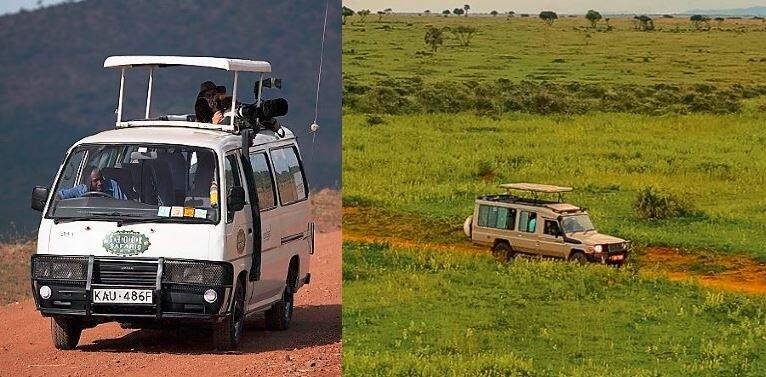Did you know that some Kenyan farmers have shifted to dragon fruit farming? They are planting dragon fruits (or pitayas) for wine production, sale, or home consumption. Dragon fruits are climbing plants with a cacti-like appearance. They come in many varieties, allowing local farmers to grow the best species for Kenyan climatic conditions. This guide explains how to start dragon fruit farming in Kenya.
Dragon Fruit Farming Background
Dragon Fruit farming is common in the United States of America and some parts of Asia, the Philippines, Malaysia, and Thailand. Kenya used to import dragon fruits from these markets until recently. The creepy, spiky plant has dragon-like scales and overall appearance.
Dragon fruit takes between 11 and 24 months to grow and produce its first yield if planted from its vines through propagation. However, the plant can take as long as five years to bear fruits if planted from seeds.
After that, you can harvest fruits for close to two decades. Dragon fruit is in the class of plants called Hylocereusundatus. Many parts of Kenya have warm temperatures and well-drained soils that this plant loves.
It can thrive in arid and semi-arid places where cactus naturally grows. Dragon fruit farming also fits the coastal region of Kenya’s warm weather. Cactus plants have thick and succulent leaves and stems. No wonder they thrive in most dry parts of Kenya.
The dragon fruit plant has similar characteristics. It traps water in its body, removing the need for constant watering or irrigation. Kenya has water scarcity in most regions, making dragon fruit the most efficient plant to grow there.
Dragon fruits are yummy, little fruits with a high nutritional value. They have the size of a chicken egg. International markets view them as a superfood for building and boosting the immune system.
Thus, Kenyan farmers can capitalize on the worldwide demand for the dragon fruit. It is an economically viable plant also because its stems and flowers have profitable applications.
Also Read: Butternut Farming In Kenya: Unlocking The Golden Harvest
How to Start Dragon Fruit Farming in Kenya – Available Plant Species
Dragon fruit farming in Kenya entails three kinds of plant species, including:
RedWhite Dragon fruit or Hylocereus undatus
This dragon fruit species grows best in most parts of Kenya. It has a white flesh and a red peel. The chicken-egg-sized fruit has a crunchy texture and slightly sweet taste.
Red Dragon Fruit or Hylocereus Polyrhizus
A red dragon fruit has red flesh and red peel. Unlike the redwhite dragon fruit, this one is slightly larger than a chicken egg. It boasts a smoother texture and flavorful taste.
Yellow Dragon Fruit or Selenicereus Megalanthus
The third dragon fruit species grown in Kenya is the yellow dragon fruit.
As the name suggests, this fruit has a yellow peel and white flesh. It is the largest of the three species but has the mildest sweetness. The yellow dragon fruit smells like flowers and its texture is creamy.
Find Out: Cost Of Garlic Farming In Kenya: A Breakdown
Dragon Fruit Growth Requirements in Kenya

Dragon fruits do not have strict climatic growth requirements. The plant grows vibrantly in a subtropical or tropical climate. Hence, any part of Kenya with moderate rainfall (500 to 1,500 mm annual average rainfall) and warm temperatures throughout the year can support dragon fruit farming.
Areas like Laikipia, Meru, Makueni, and Naivasha have proven worthwhile for this type of farming so far. The best temperature range for dragon fruit farming is 20 to 35 degrees Celsius.
These fruits do not succumb to fungal infections in these climatic conditions. Other essential growth requirements for dragon fruits in Kenya include:
Altitude
The best altitudes for dragon fruit farming are lower to moderate elevations. In practice, you need to choose an area between 0 and 5,900 feet (1798.32 meters) above sea level.
Sandy or Loamy Soil
The dragon fruit plant has a juicy stem, a sign that it adapts well to soils with good drainage. Sandy and loamy soils are the best options.
PH Level
Pitaya plants require a PH level of between 6 and 7.5. This translates to a slightly acidic and neutral PH balance. You need to take your soil sample for PH level testing before planting the first fruit.
Soil Fertility
Dragon fruit plants are relatively hardy but still require adequate nutrients in the soil to proliferate. Thus, you should apply some manure when planting to enhance the texture and fertility of the soil.
Sunlight
Dragon fruit plants love the sun so much that they need it for six to eight hours daily. Thus, plant this fruit in a sunny spot where it can trap the sun’s heat and light directly.
Adequate sunlight can prevent stunted growth and boost fruit production.
However, extreme heat can destroy the plant’s growth and yield. Remember to mulch your plants when your region gets too hot for the plants to endure.
Seedlings Preparation and Stem Propagation

Staring dragon fruit farming in Kenya is easy if you can grow your seedlings from seeds.
Here is how to make your pitaya seedlings at home:
- Gather ripe dragon fruits and remove seeds from them.
- Wash and dry your seeds thoroughly.
- Get the best seed starting mix and bury your seeds in it about ¼ inches deep.
- Provide water, warmth, and indirect sunlight for a perfect germination process.
- Dragon fruit seeds can take many weeks to germinate, so be patient.
- Transplant mature seedlings into pots and nurture them there so you can start stem propagation.
How to Do Dragon Fruit Stem Propagation
You should plant dragon fruit cuttings rather than the seedlings. Thus, wait until your seedlings are tall enough to produce the best-sized cuttings. These cuttings usually produce plants with similar genes as the parents.
Use the following process to propagate dragon fruits from stems:
- Choose mature dragon fruit seedlings only
- Cut stem segments of twelve to eighteen inches long. Ensure your stems have one or more nodes to stimulate bud growth
- Air-dry your cuttings for a couple of days or until they create calluses. This is to ensure they do not rot when the roots begin to form
- Plant the dried cuttings on sandy or loamy grounds to boost drainage. Keep the soil pretty moist
- At this stage, your cuttings do not need direct sunlight. Once they develop some roots, they are ready to face the sun directly
Dragon Fruit Planting Guidelines
To ensure high yields, plant your dragon fruit plants this way:
1. Dig holes for your cuttings. Each hole should measure 60 centimeters all around.
2. Leave a distance of 2 meters between holes in one row. Leave a space of 2 meters between rows. So, the best spacing-out distance for dragon fruit plants is 2 meters by 2 meters.
3. Insert tall wooden or concrete posts in the middle of the holes to prop your cuttings. Later, they will turn into climbing vines and will twist around these posts. These strong posts can bear the weight of the bulky, climbing stems.
4. Fill the holes with a mixture of manure and topsoil.
5. Additionally, put some inorganic fertilizers into the hole. Each cutting requires 90g of superphosphate, 70g of urea, and 40g of muriate of potash.
6. Plant the cuttings by burying them in the hole.
7. At flowering and fruiting stages, add 100g, 50g, and 50g of muriate of potash, superphosphate, and urea respectively.
Dragon Fruit Flowering
The dragon fruit flowers start from the nodes. That is why your cuttings above needed to have some nodes. A dragon fruit bud starts from the node and becomes a flower after about thirteen days. Once the flower opens up, the pollination stage begins immediately.
If the pollination fails, the fruit formation will also come late. But, if the pollination works immediately, the flower will become a fruit after thirty-eight days. The whole flowering and fruit formation process takes about fifty-two days.
Like other plants in the cactus family, the dragon fruit plant starts producing fruits in the eleventh month. The peak fruit production stage starts in the second year. You can keep harvesting fruits from the same tree for fifteen to twenty years.
Number of Dragon Fruit Plants Per Acre
The amount of fruits you can get from an acre largely depends on how you space out your plants.
Overcrowded plants are vulnerable to pests and diseases. If you leave large spaces between your dragon fruit plants, you will reduce their vulnerability.
Dragon fruits are prone to pests like aphids, mealybugs, thrips, and fruitflies. Common diseases affecting these fruits are root rot, bacterial soft rot, and canker stem.
Leaving a space of 2 meters by 2 meters around each plant means you can plant 1,000 cuttings in an acre.
Consider that you can plant two cuttings in one hole. That means you can end up with 2,000 dragon fruit cuttings in an acre.
Some sources say you can plant up to 4 cuttings per hole. By planting four cuttings in one hole, you can end up with up to 4,000 plants in one acre.
Approximated Cost of Producing 1 Acre of Dragon Fruits and Potential Yields
Look at the table below to understand the estimated cost of this project in one acre:
| Activity | Cost in KSH | Total Cost in KSH |
| Digging 1000 holes | @40 *1000 | 40000 |
| Erecting a drip irrigation system | – | 80,000 |
| Setting the Trellis Support system with 1,000 posts | @300 *1000 | 300,000 |
| Labour | – | 5000 |
| Cost of inorganic fertilizers | – | 4,500 |
| Cost of pestcides | – | 4,500 |
| Pruning and plant management costs | – | 5,000 |
| Other small expenditures | – | 20,000 |
| Total Cost | 459,000 | |
You can grow your dragon fruit seedlings and cut some healthy cuttings from them to save money. If you buy seedlings/cuttings, one could cost Ksh.500 to Ksh.2000. If you need 1000 to 4000 cuttings, the total cost can rise to millions. So it is cheaper to propagate your own.
You can also design your posts at home and erect them to reduce labor and production costs. If you find ways to reduce initial costs while providing the correct growth requirements, your dragon fruit profits will go up.
Farmers who know how to start dragon fruit farming in Kenya reveal that a single plant can yield 15kg to 25kg.
A kilogram of dragon fruit can bring revenue of 500 to 1,200 Kenya shillings. Thus, the first two harvests from your acre can make you up to Ksh.2,000,000.
Dragon fruit farming is in vogue now in various parts of the country and people are getting rich from it. We hope this guide can give you the strength to try it. If you have idle land, you can plant a few dragon fruit plants and use them for stem propagation.







